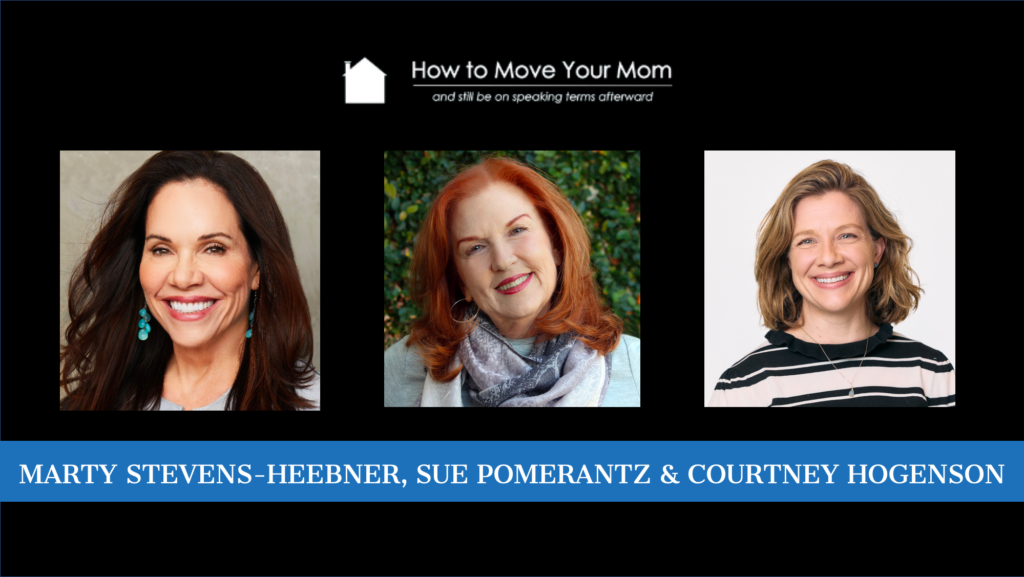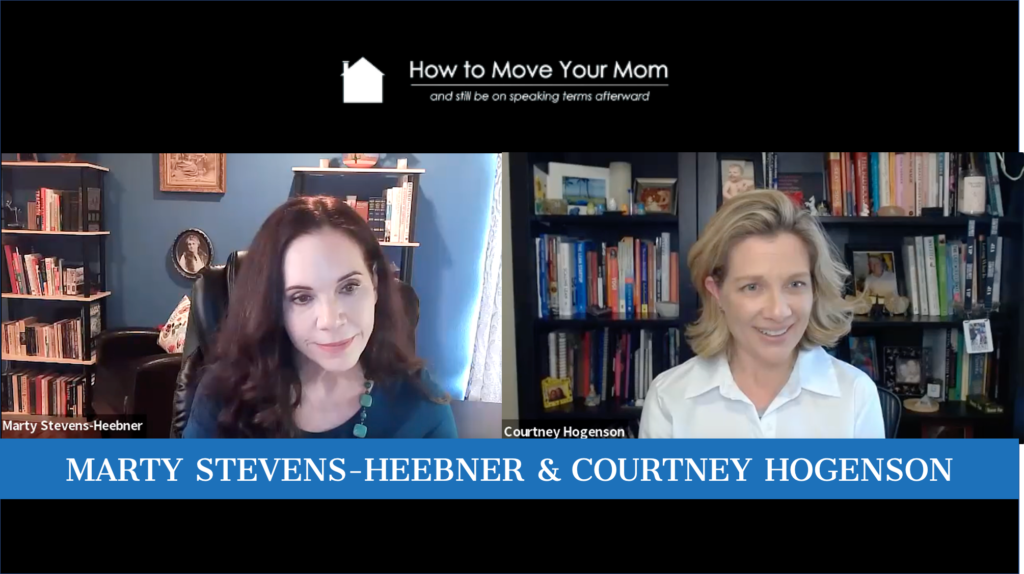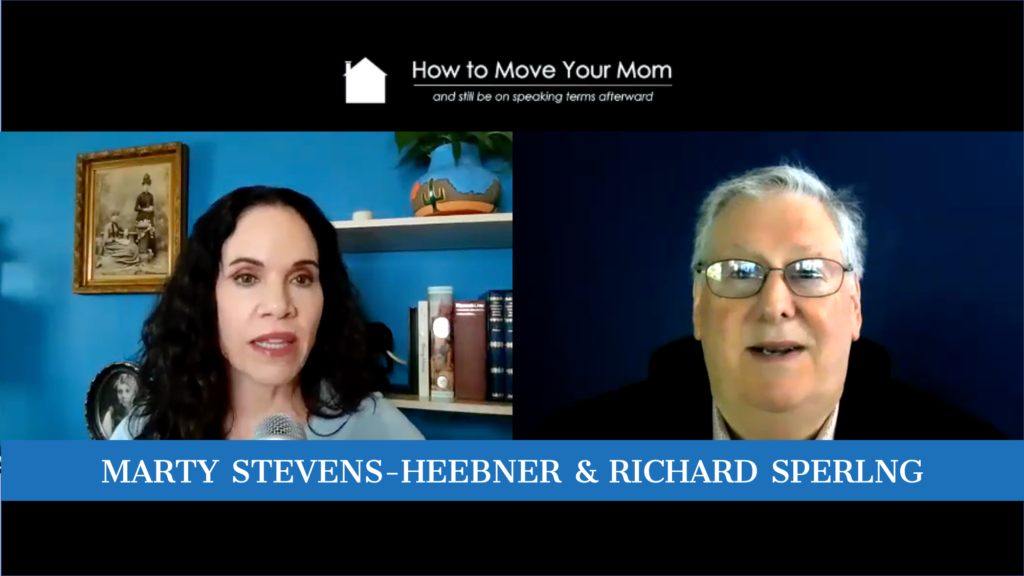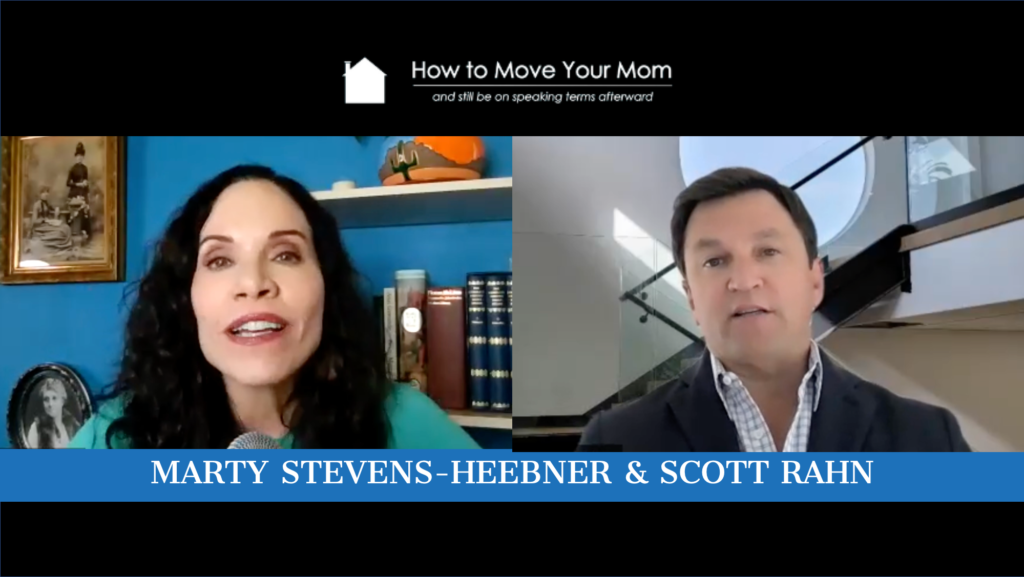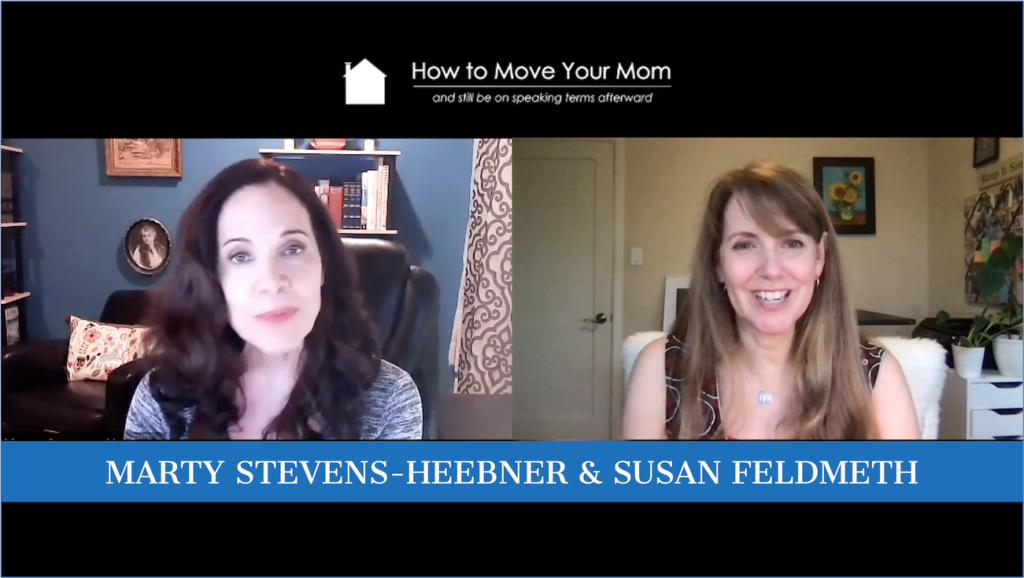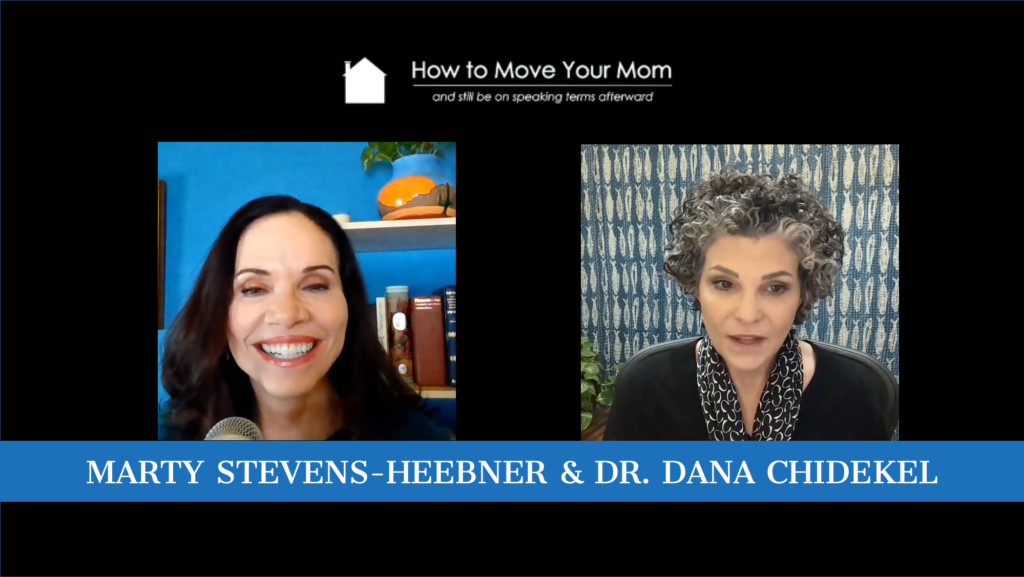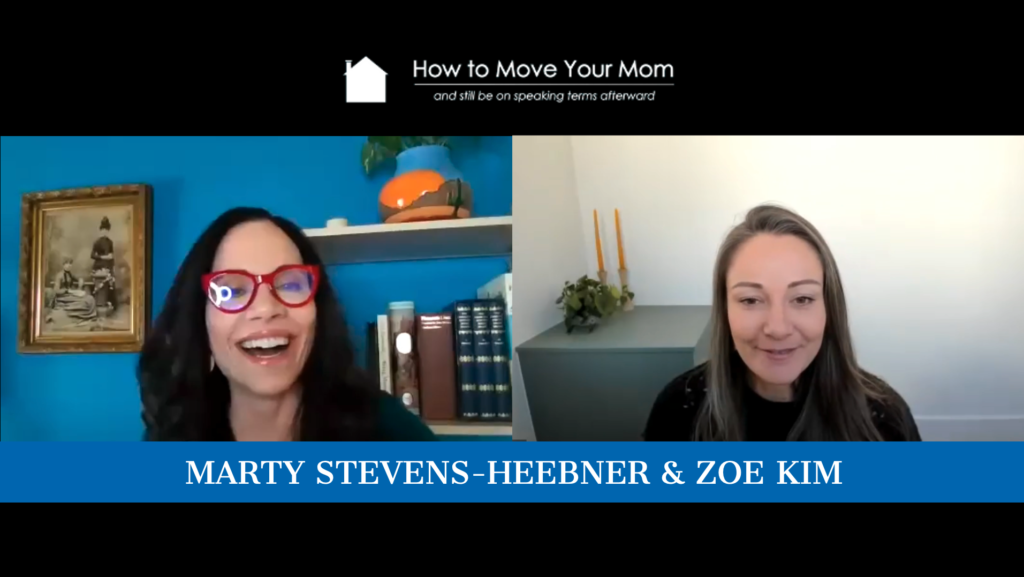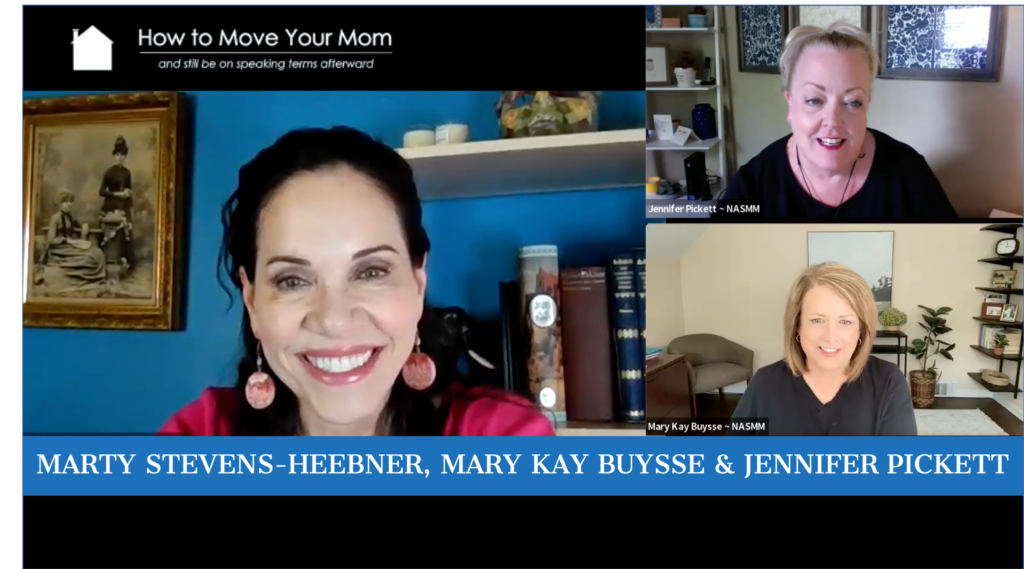Celebrate the 2nd anniversary edition of "How to Move Your Mom (and still be on speaking terms afterward)", where host Marty Stevens-Heebner shares a collection of resonant stories shared by past guests, along with a few of her own from encounters with remarkable clients. This special edition of Marty’s podcast encapsulates the myriad challenges, profound realizations, and disarming humor that often emerge during later life journeys.
This episode is not just a commemoration but it’s also a beacon of hope and understanding for those navigating life’s later years.
Clear Home Solutions manages a lifetime's worth of treasures - and all the emotions attached to them - when it's time for you or your senior parent to move or make their home safe and organized for their later years. Have photos? We can organize and digitize those for you, too.
What you will learn from this episode:
- The importance of maintaining a positive outlook despite aging’s adversities
- Reflections on dreams, departing this life, and the impact of gratitude
- How the memories of grandparents and loved ones shape and enrich our lives
Connect with Marty Stevens-Heebner:
Email: marty@clearhomesolutions.com
Marty Stevens Heebner:
It's hard to believe, but How To Move Your Mom (and Still be on Speaking Terms Afterward) is over two years old as a podcast. Really amazing, and thank you for being so supportive of us. In the last episode, there were a couple of wonderful stories that I had to edit out for time, and it's occurred to me that there are a couple of stories I'd like to tell, so that's what this episode is all about, stories.
Moving your mom or your dad or yourself isn't just about moving things from one place to another. It is much more complicated than that, as are so many things having to do with later life. How To Move Your Mom (and Still be on Speaking Terms Afterward) provides in-depth conversations with professionals, older adults, and their family members who share their stories with warmth, understanding, and humor. I'm your host, Marty Stevens-Heebner, and here you'll find answers to many of your questions as well as different perspectives that I hope will inform and inspire you.
When I was recording our last episode with Courtney Hogenson of Call-Light, she told a couple of wonderful stories that I had to edit out and I'd really like to include those because they're very moving. I'm also going to include a fun story from Sue Pomerantz of Concepts for Living. It was our very first episode. Then there are a couple of stories I'd really like to share because I find that the older adults and their families we get to work with are just remarkable and really impact our lives in so many different ways. To start things off, this story is from Sue Pomerantz of Concepts for Living. She is one of the most fiercely respected people working in senior services in the whole LA area, and she had a great family story to share.
Sue Pomerantz:
My grandfather was an observant Jew and he would walk his little self up the hill in West Hollywood to his synagogue every single morning. There was a very short period of time where I lived with him and his daughter, my aunt, while I was visiting LA and I had met my husband the summer before. So I was up very, very late and come home, and my aunt was an all-nighter, so I would go in and talk to her for a little while and we would hear my grandfather get up at five o'clock in the morning. And I would run from my aunt's room to the sofa where I slept, jump under the covers fully dressed, see, Marty, these are things you never knew about me, pull the covers up, and then he would go into the kitchen, he would make his hot water and lemon drink, and he would say his prayers, and he would leave for synagogue. I would get into something more comfortable for sleeping purposes and go back to bed.
Marty Stevens Heebner:
I did not know that about you. I love that. And your aunt is a night owl like you are.
Sue Pomerantz:
She was. We were so blessed to have him.
Marty Stevens Heebner:
Sue tells such fun stories, great sense of humor. And now a couple of stories from Courtney Hogenson of Call-Light. Courtney is a great storyteller and you would never know that my interview with her was the first time she'd ever been on a podcast. You had this experience back when you were in LA and was seeing Joe.
Courtney Hogenson:
Oh, Joe.
Marty Stevens Heebner:
Can you talk about that because that was a remarkable story?
Courtney Hogenson:
He was a remarkable human being, but he's passed now. He just lived one of those lives that you can't make it up. He grew up during the Great Depression, his family lost everything, moved across the country in a car with a cradle and everything they had in this car from Detroit out to California. Joe and his brother ended up getting polio at a young age, so it was hardship after hardship for these guys. At the age of 8 or 10, Joe went into the hospital, they said, "Oh, he is never going to walk again." So he spent a year at the LA County Hospital. He'll say, "Courtney, I was so lucky I didn't ever have to have an iron lung. I only lost the use of my legs. I knew people that couldn't use their arms." And I'm just like, "Okay, wow."
So Joe was the rare, not a perfect person by any means, but in that time of his life, these were his golden years and I'd be going through something like fertility issues were going on at the time. I never told him about it because I didn't want to burden him with that, but I would go see this man who is not doing well and he's in a wheelchair and all the things. And I'd say, "Joe, how are you today?" And he'd say, "It's a miracle I'm alive. Can you believe I'm alive? How is that even possible? Can you believe that?" And it got to the point where he was really suffering. Cancer had gone into his bones. He was in a lot of pain and he was very stoic. And it went back to when he was the kid with polio. They used to call him crybaby in the hospital because they didn't want to give him pain medication.
They didn't want him to get hooked. So this child was crying and the nurses, the other patient, everyone called him crybaby. He said, "It finally stopped hurting. I think the nerves died and I finally just stopped crying." So he had this memory of being tough. So once he got to the point where he was really actively in pain, I had to almost give him permission, "Joe, it's okay. You don't have to suffer. You don't have to suffer." Because the nurses said they tried and tried, the hospice nurses, he won't take anything. And I walked in the house and I could just hear him moaning and I was just, "If it's the last thing I can do is let him know that it's okay."
And by no means did I force him, but I just went to him and I just said, "It is okay." And I used to worry about him before we got to that point. He started to sleep a lot more and I was like, "Oh, he's depressed. I'm worried about him." And it's just amazing how you start to think, "Oh, if that was me, that's how I would feel." But they're in such a different place and I would go see him. I'd be like, "Joe, are you depressed? You're sleeping a lot. You're spending a lot of time in bed." And he'd say, "It's the best. I'm having the best dreams. I get to see my mom. I get to see my brother. I'm flying." It's like they were preparing him for the great beyond.
Marty Stevens Heebner:
Yeah, his departure.
Courtney Hogenson:
Yeah.
Marty Stevens Heebner:
And you talk about somebody who everything is a sunlit and shadow side, we know that, always looking into the sunlight, that's who he was.
Courtney Hogenson:
Yeah.
Marty Stevens Heebner:
That's who he was. I love that story. I love Joe. You also had a client who you were playing music for them as they were leaving and lighting candles. Who is that person where you created this amazing environment as they were actively dying?
Courtney Hogenson:
This woman was Linda. She was one of the most unique individuals and she was actually quite young. She was only in her early 60s. And she had interstitial lung disease, never smoked a day in her life, and ended up getting a lung transplant. And most people aren't aware, but once you get any type of transplant, you have to take immunosuppression drugs and you're vulnerable after that because you're trying to get your body to not reject this new organ, but you're very vulnerable to other things. So Linda, this is one of those stories you don't want to get me started, she picked up the flu on accident from a friend and sent her into rejection. And she wasn't a candidate for another lung transplant.
Marty Stevens Heebner:
It was rejecting the lungs.
Courtney Hogenson:
And it was just one of those cases where her friend, the flu didn't really hurt her, but it's people like that I get the flu shot for because I'll be fine. I may have a day or two where I'm down and out, but it may push someone like that over the edge where they can't recover. So that's why I always get my flu shot.
Marty Stevens Heebner:
This is what vaccinations are for, is to keep everybody safe, not just you.
Courtney Hogenson:
So I was going away to Hawaii for a wedding and I thought she was going to pass before I got back. And I just remember telling her how much I loved her and I grew very close with her over a very short period of time. She did not want to die. She had a lot to live for, she had her first grandbaby, and just helping her cope with that was really nice. So when I got back from Hawaii, I couldn't believe she was still there and she said, "Can you come over? I feel like I think this is it. I think it's eminent." And I said, "Absolutely." So I got there and her caregiver from the day shift stayed, so we had two caregivers there. And she's so funny. She said, "I came into the world of my birthday suit and I think I should leave in my birthday suit."
So she stripped down and she climbed into bed and we put on Brian Eno for her, just really beautiful ambient music. And one of the caregivers was rubbing her head and one of them was rubbing her feet. I think I was rubbing her hands and we were just asking her her best memories. So she's talking about, "You have to go to Africa, Courtney. It was one of the most amazing things I ever did." She said her worst fear was to wake up in the hospital. That was her worst fear. She just didn't want to wake up in the hospital. I promised her I'd stay until she passed. And she didn't pass until 4:00 AM, but we stayed there with her because I feel nobody should be alone if they don't want to be when they pass. And it felt like such a gift to give that to her.
She was in her own bed surrounded by people that loved her, and she was telling us her life story. And one of the things was she grew up, I don't know if it was Alabama, Georgia, somewhere in the Deep South, and she was a school teacher and she said, "Oh, I got in trouble one time with the KKK because I was teaching the kids that they should all love each other and that we're all equal." And I said, "Oh, please tell me more." And she said, "They started harassing me and one time they tried to run me off the road in my little VW bug. I'm just like this young teacher. So they run me off the road." And I said, "Were you scared?" She said, "Yeah, I thought they were going to kill me." I said, "Did they shut you up?" "No, that kind of thing is worth dying for." And this woman went on to become the high school principal, then the superintendent, and then the life coach. And she was just one of those people where you're just like, "Wow, it's a privilege."
Marty Stevens Heebner:
Such a heart and such experience and such courage. What a privilege and what a wonderful way to depart and how wonderful that she was accessing all those long-term memories that are very deep.
Courtney Hogenson:
She was just so special and so many of them are. I feel it's such a gift to be able to give that to someone if they want to die in their own home. Often they don't want to die but aren't ready to die, but it's okay. The writing's on the wall, let's make it as comfortable as we can.
Marty Stevens Heebner:
Now, you would probably know this better than me because you're a nurse and understand health and medical issues far better than I, but first the brain start to die. And I remember being with both my parents, they died at very different times, but they both were adamant about not going to the hospital. They had to do not resuscitate, DNRs, but because they were actively dying, the fear kicked in from the old brain because it just wants our body to survive. That's its job and it's very good at doing that. But to me, it seems natural that kicks in at the end because the body just wants to survive and then eventually things go quiet.
Courtney Hogenson:
Yeah. You're right. Every death is a little bit different depending on what their disease process and their age and all that. But it just starts to become a systemic thing where one system shuts down and then another one starts to shut down. And sometimes it's all of them a little bit at once and sometimes it's one and then another. So it just depends. And I think what we can do for those people during those times, especially as healthcare professionals, is just to guide them and to make them feel comfortable. And if they want to cry, let them cry. If they want to scream, let them scream. Just meet them where they are and accept them and just do whatever you can. I just always think how would I want someone to treat me if that was me?
Marty Stevens Heebner:
Yeah. It's so important because they're still here. Our culture turns our back on death, doesn't want to talk about it. So we've heard all the stories about oncologists who can be really cold to their patients because they've seen so many of them die, but then maybe you shouldn't be an oncologist.
Courtney Hogenson:
What's funny is I remember going with Joe who had prostate cancer, who we talked about earlier, I remember going with him to the oncologist because we just wanted to make sure he knew what his options were and we just wanted to know, "Okay, how bad is this?" So we go and the oncologist, "Yes, you have stage four prostate cancer. It's everywhere." Okay, that's not great, but we're not surprised because he hadn't been to the doctor in 10 years. Who knows?
Marty Stevens Heebner:
It is what it is, right?
Courtney Hogenson:
And I just started to think, "If I wasn't here with him, Joe's going to do whatever this doctor says," because what started to happen was the doctor said, "Okay, we're going to set you up for chemo. We're going to set you up for radiation." He was having him go down this path that, look, if he was 40, I understand.
Marty Stevens Heebner:
How old was he?
Courtney Hogenson:
He was 85. And I'm just thinking, "Oh, thank you for your opinion. Thank you very much. We'll talk this over with the family." I get in the car and I call the daughter-in-law and I'm explaining to her, she goes, "Oh my God, they'll kill him."
Marty Stevens Heebner:
And make his life miserable.
Courtney Hogenson:
Yes. And I told him, "I will support whatever you want to do. If you want to fight this thing like that." And he just said, "I just want to enjoy what time I have left. I don't want to be spending my time going for chemo, radiation, and side effects." And he lived for another three years, and a great three years.
Marty Stevens Heebner:
If chemo and radiation can battle the cancer, I have to wonder if that misery can end up taking you out because they always separate the mental from the physical, but the brain is in the body.
Courtney Hogenson:
All connected. I remember another one, Mr. Chamberlain. He was so amazing and he had cancer and he was older up there like Joe. And he went through all those things because his wife was still alive and he really wanted to stick around as long as he could. That treatment ended up killing him, I think, faster than the cancer would have. But you just don't know. So you really have to just go in with an open mind and get as much information as you can and then let them decide. But I think a lot of times it's not even presented to them, what are the odds and what does the usual course look like for someone in their 80s going through this? They don't talk about it and they should.
Marty Stevens Heebner:
There was an early episode of How To Move Your Mom where a friend of mine talked about talking to the doctors about letting her mother go because her mother had been so clear with her, "If I'm stuck with this feeding tube to keep me alive, palliative care only. Make me comfortable, let me go." And it's hard. I can't imagine not knowing, with my mother, for example, with cancer, she died in 1988 at the age of 58. And in the 70s, there was the Karen Ann Quinlan case where she was younger and she was comatose. It was her parents who wanted to let her go, and there was a court battle and the parents won. My mom said multiple times while that was going on, if I wind up at that state, let me go. She made it really clear so that when she was on the runway to just make her comfortable, give her some extra Demorol, and. It's so hard because you miss them so much. I love your stories. They're great.
Weren't those phenomenal? I always enjoy talking with Courtney and with Sue. They've become very dear friends over the years and I'm so grateful they're in my life. As you may have noticed, the first question I always ask my guests is, what's your favorite memory of your grandparents? There are a couple of reasons I do that. First of all, I love hearing their stories and I hope you do too. It also, for the interviewee, puts them in a good place because they're remembering some wonderful memory and it opens them up as the interview continues. So that's the reason I do that. And I thought it only fair to share one of my favorite stories about my grandparents. I was the youngest in our whole generation of cousins, so my grandparents were pretty old when I was born, so I don't have a lot of memories of them.
I think my favorite one is spending time with my father's father, my grandpa, on Long Island. They lived in Massapequa Park and one afternoon he and I were out for a stroll. I was probably seven years old, I think, and the maple trees were shedding their, I think they're called helicopter seeds or something, and I collected a whole bunch. When we got back home, my seven-year-old self made my dad help me plant the seeds. And believe it or not, all these years later, those full-grown trees are still there. They're enormous. Every year, they're so big, they're tangled in the phone wires. So the city, Buffalo, they have to send around a team to trim the branches so they don't take down the wires in case there's a storm. And I hadn't been home for 10 years and I thought maybe they were gone, but actually, I visited a few months ago and they're still there.
So that's my favorite grandparent story. As for clients, many of them are so memorable. One of my favorite clients ever was someone we worked with in the very early years of Clear Home Solutions. I was still working in the field and we were working with this wonderful woman named Rose. Her husband had died, I think, in the past year. She missed him terribly. There are a couple of great parts of Rose's story. One of Rose's stories has to do with donating. Rose and her husband started out with nothing. They ended up being very successful, but when they started out, they really had very little. So she went around to garage sales to amass enough dishes to feed everybody, and especially if there's a holiday or something, and she still had a lot of those dishes all those years later. She'd like to get white dishes with some sort of floral pattern on them. And by this time, there's quite a stack and a lot of them had cracks or were compromised in some way.
I remember Rose saying, "I guess we'll just have to toss these and get rid of them." And I said, "No, we're going to donate these and another Rose is going to come along. She's going to be so glad she can buy these for a really low price." And Rose just lit up because she remembered being that Rose, being that person who was searching for some plates that were in decent shape that she could use because she didn't have the money to spend. That's what donating is about. It's really giving gifts to people who you'll never meet. And Oprah figured it out, the best part about gifts is being the giver. There's another wonderful story I love to tell about Rose. She was, I think, in her 80s. She had some hip trouble, so she got around on a walker and was hunched over and she had short, very curly, frizzy gray hair and glasses.
She was the quintessential grandmother, the way she looked. I was working with her and we were going through the books on the bedstand. There was a huge stack on either side of the bed. She and her husband had been big readers. So I'm going through, "Do you want to keep this? Do you want to let it go?" And I came to the, "Joy of Sex." And I looked at Rose and she looked at me and I said, "You go, Rose." This is great. And she smiled. It was so great. And I kept digging through the books. By the time I got to the bottom, there had been four books about sex. She said, "We were a very happy couple." And I just loved it and I think she appreciated being thought of as a sensual woman, as an older woman because it doesn't go away. Believe me, there's all kinds of relationships going on in senior living communities. So keep that in mind. That feeling never goes away, and that's wonderful.
The last story I'm going to tell is about a client named Helen. She really didn't want to move to assisted living, but she was living in an apartment in Hollywood. She lived there for decades, literally. She had a lot of stuff. She was going blind and losing her hearing, and she had been leaving the gas on on the stove every so often. Yikes. So, she needed to move. Apparently, she'd been quite the singer when she was younger, so a bit of a diva. We have a lot of them in Los Angeles. And I remember her saying about moving to the senior living community, "I feel like I'm moving to the place I'm going to die." I think I audibly gulped and I replied with, "I get why you feel that way. I get it. Here's something to think about, you have a whole third act to live out."
She lit up with that, the singer, the diva, "When you move to a senior living community, they'll do all the cooking, they'll do the cleaning. If you so much a sneeze," and this is before COVID, "they're there to take care of you." And that helped adjust her thinking. One of the key things if you're talking to a family member or a loved one or your spouse about moving like that to a senior living community and they feel that way, they may not say it out loud, but they may express all kinds of different feelings. Don't ever negate their feelings, accept their feelings. You may not be feeling that way, but that's how they feel in that moment. So just say, "I get it. I understand. Tell me more about that. Why do you think you're feeling that way?" Because then they're more relaxed. They won't shut down and not talk to you or get angry or anything like that. Have a conversation.
I get that probably you're going through a lot of stress too, and it's probably good for you to have that conversation too with them and talk about your own feelings. It can really help to move things forward, and sometimes you get to listen to another great story that you hadn't heard before. So those are the stories I wanted you to hear. I hope you enjoyed them. Thank you for listening to How To Move Your Mom (and Still be on Speaking Terms Afterward). I hope you've enjoyed it as much as I have.
Thank you so much for listening to How To Move Your Mom (and Still be on Speaking Terms Afterward). Please visit howtomoveyourmom.com for more information about this episode and for additional podcast episodes featuring other extraordinary guests and conversations. Until next time, this is your very grateful host, Marty Stevens-Heebner.
